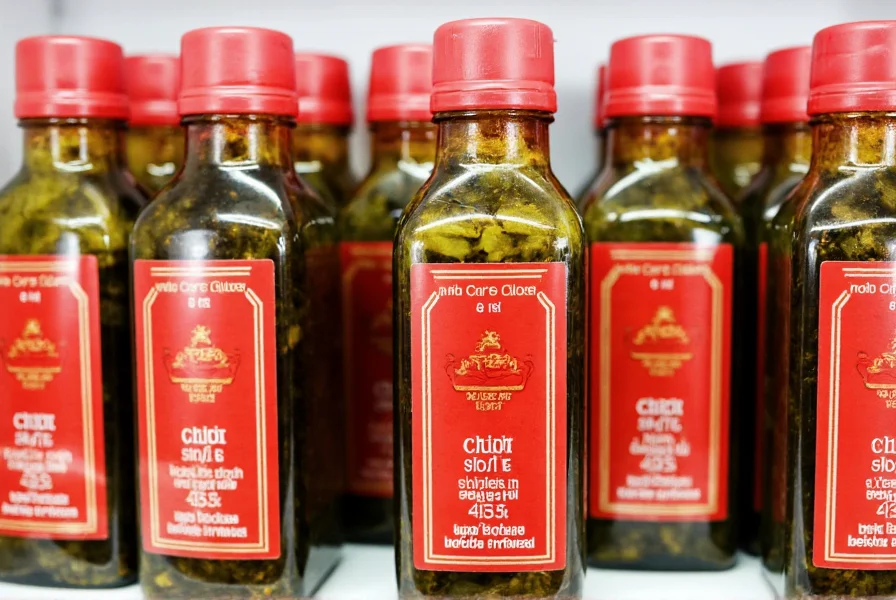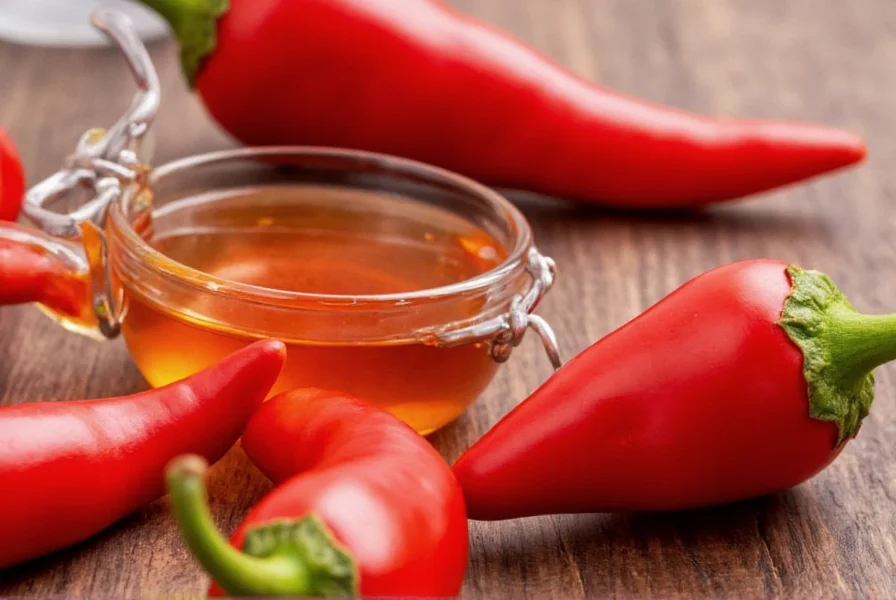Understanding proper chili oil storage prevents waste and ensures food safety. This guide examines the science behind chili oil preservation and provides clear storage recommendations based on oil composition and preparation methods.
The Science Behind Chili Oil Preservation
Chili oil's shelf stability primarily depends on its composition. Commercial varieties typically use refined oils with high smoke points like soybean or canola oil, combined with vinegar or other preservatives that create an inhospitable environment for bacteria and mold. The oil itself acts as a natural barrier against oxidation when properly sealed.
Homemade chili oil presents different considerations. When recipes include fresh garlic, onions, or other moisture-containing ingredients, the risk of botulism increases significantly. These fresh components introduce water into the oil mixture, creating conditions where harmful bacteria can thrive at room temperature.
Storage Recommendations by Type
| Type of Chili Oil | Unopened Storage | Opened Storage | Expected Shelf Life |
|---|---|---|---|
| Commercial (preserved) | Cool, dark pantry | Refrigeration recommended | 12-18 months unopened, 6-8 months refrigerated after opening |
| Commercial (no preservatives) | Refrigeration recommended | Refrigeration required | 6-12 months unopened, 3-4 months refrigerated after opening |
| Homemade with dried ingredients | Not applicable | Refrigeration required | Up to 1 month refrigerated |
| Homemade with fresh ingredients | Not applicable | Refrigeration required | 1-2 weeks refrigerated |
Why Refrigeration Extends Shelf Life
Refrigeration slows two primary degradation processes in chili oil:
- Oxidation - Cold temperatures reduce the rate at which oil molecules react with oxygen, preserving flavor and preventing rancidity
- Microbial growth - Even in oil-based products, certain bacteria can survive in trace moisture; refrigeration inhibits their reproduction
While refrigeration may cause temporary cloudiness or solidification (particularly in oils with higher saturated fat content), this doesn't indicate spoilage. Simply allow the oil to return to room temperature before use, and gently shake or stir to restore consistency.
Signs Your Chili Oil Has Spoiled
Regardless of storage method, check for these spoilage indicators before use:
- Off smell - Rancid oil develops a paint-like or bitter odor
- Cloudy appearance - Beyond temporary cloudiness from refrigeration
- Mold growth - Any visible fuzzy spots, particularly around the bottle rim
- Off taste - Bitter or sour flavor that wasn't present originally
- Bubbling or fermentation signs - Indicates microbial activity
When in doubt, discard the product. Consuming spoiled chili oil won't typically cause serious illness but can lead to unpleasant digestive issues and compromised flavor in your dishes.
Maximizing Your Chili Oil's Freshness
Follow these practical tips to extend your chili oil's shelf life regardless of storage method:
- Always use clean, dry utensils when scooping oil to prevent moisture contamination
- Keep the bottle tightly sealed when not in use
- Store away from direct sunlight and heat sources
- Consider transferring homemade oil to smaller containers to minimize air exposure
- Label homemade batches with preparation dates

Special Considerations for Homemade Varieties
If you prepare chili oil at home, food safety becomes particularly important. The FDA recommends acidifying garlic and other fresh ingredients before adding to oil to prevent botulism risk. A safe homemade chili oil recipe should include:
- Vinegar or citric acid to lower pH below 4.6
- Properly dried chili peppers (moisture content below 10%)
- Refrigeration from the moment of preparation
- Consumption within 2-4 weeks
Commercial producers use precise pH balancing and preservative levels that home cooks often cannot replicate safely. When in doubt about homemade chili oil safety, refrigeration is non-negotiable.

Does refrigeration affect chili oil flavor?
Some chili oil enthusiasts worry that refrigeration diminishes flavor intensity. While cold temperatures can temporarily mute volatile flavor compounds, allowing the oil to return to room temperature before use restores most flavor characteristics. The trade-off between optimal flavor and extended shelf life generally favors refrigeration for opened bottles.
Professional chefs who use chili oil regularly often maintain two supplies: a small room-temperature bottle for immediate use and a larger refrigerated supply for long-term storage. This approach balances convenience with food safety considerations.











 浙公网安备
33010002000092号
浙公网安备
33010002000092号 浙B2-20120091-4
浙B2-20120091-4